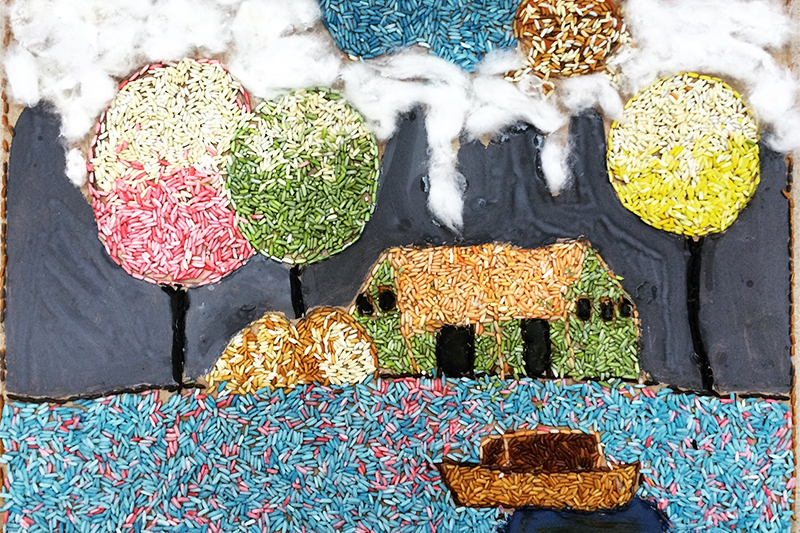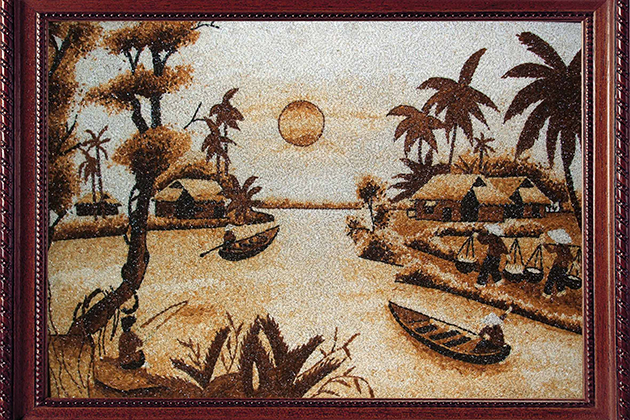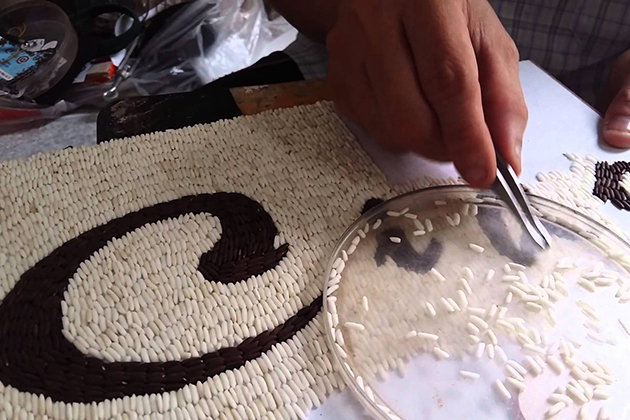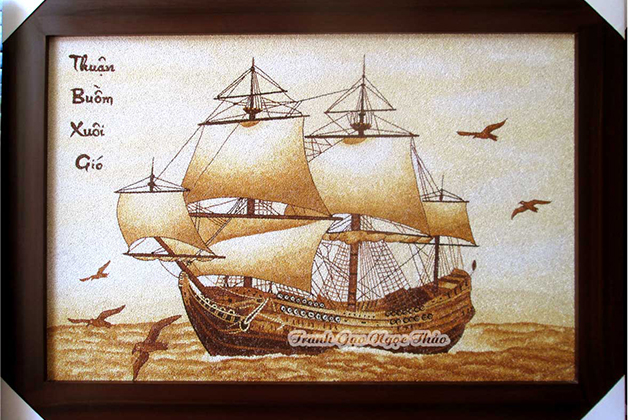There is no doubt that Vietnam is one of the leading rice exporters in the world. For thousands of years, rice has not only been associated with farming but also the cultural, spiritual life, and prosperity of the nation. But perhaps not many people know that in addition to export, Vietnamese rice grains are also involved in the field of art. From the natural rice grains, through the skillful hands of the artisans, the unique and creative works of art have been created known as Rice Painting.
The Origin of Vietnamese Rice Paintings
It is said that rice painting originated from the ancient art of India. With a passion for art and a desire to learn, some young Vietnamese artists have learned and found out the way to create a unique kind of Vietnamese artwork. Rice painting is considered as a modern painting line with the uniqueness not only in the material but also in the creativity of the artist.
The Process of Making a Rice Painting
Each artwork is handmade and exclusive since it comes directly from the heart and soul of the artist. A completed rice painting must go through different stages. The first and foremost step is rice selection: the selected grain rice must be strong, shiny, and solid. Each type of rice is used for different purposes: ordinary rice for thin details; sticky rice for big details and broken rice for small details.
After choosing the suitable kind of rice, the next step is rice roasting, without the use of any coloring chemicals. The color of rice will depend on temperature and time. Roasted rice may have 27 shades from white, yellow, orange, brown, cockroach, black,… During this process, it is indispensable that the rice not burn or crack. Then, the artist has to sketch an outline of the picture on a wooden block. This is the stepping-stone to shape the details and to arrange them in the picture. The more detailed the sketch is, the more beautiful the picture will become.
After completing the sketch, the artisan starts using the tweezer to arrange and graft the grains on the already sketched wooden frame. Lastly, rice is preferred by mice and insects, so artists have to apply a varnish treatment and chemical substance to preserve the colors as well as enhance the aesthetics of the painting. The most prominent feature of rice painting is in the raw material, followed by the meticulous and feel of color when roasting. Moreover, a beautiful rice painting must meet the requirements of shape, color, layout, ratio, and more importantly the fit of rice and the arrangement of the motifs.
Popular Types of Vietnamese Rice Paintings
The topics of rice painting are varied: Portrait rice painting; landscape rice painting; calligraphy rice painting; religious rice painting,… Because of the diversity in theme, foreign visitors can easily choose a picture of rice as a gift. In particular, paintings of nature, country, or Vietnamese are favored by many people. What makes a rice painting unique is the color harmony, the arrangement of the rice grains, and the attractive display. The artist’s talent and ingenuity are revealed through the combination of these elements.






